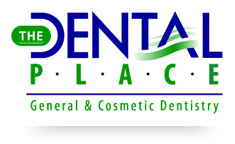04 Apr Tooth Restorations: How dental crowns can help
 Our teeth receive a lot of punishment each day in life. From the foods we eat to the objects we subconsciously chew upon, and even through physical exercise, our teeth put up with a lot. As a result, teeth can sometimes become damaged, which can in turn have a detrimental effect on the appearance of our smile. A dental crown can, however, help to restore the appearance of a smile by concealing tooth damage.
Our teeth receive a lot of punishment each day in life. From the foods we eat to the objects we subconsciously chew upon, and even through physical exercise, our teeth put up with a lot. As a result, teeth can sometimes become damaged, which can in turn have a detrimental effect on the appearance of our smile. A dental crown can, however, help to restore the appearance of a smile by concealing tooth damage.
Dental crowns are typically made of porcelain, and a dentist uses dental crowns to treat a range of issues, from concealment to damage control. A dental crown can be used by a dentist to conceal large fillings, such as those used in root canal treatments; alternatively, if a tooth has already received several fillings, its structure may not be sufficiently strong to handle another, and so a dental crown may be used instead to cover and seal the tooth.
In instances of damage, where the tooth’s enamel has been broken or cracked, but the underlying tooth’s structure is intact and in good health, a dentist can use a dental crown to conceal the damage, and also to prevent the tooth from incurring further damage. Teeth that are badly cracked can be preserved through the use of dental crowns, as the crown can act as a buttress to support the underlying tooth.
Severely misshapen or discolored teeth can also be treated through the use of crowns, although a dentist may opt for other options of treatment dependant on the severity.
A dental crown isn’t used solely to conceal or protect damaged or broken teeth. Other uses for crowns include acting as a support to help hold a dental bridge in place, and to cover the titanium rod used in dental implant treatment.
To treat a tooth that is to receive a crown, the dentist removes a thin layer of tooth enamel in order to shape the tooth and make it more receptive to the crown. Impressions of the mouth are then taken and the impressions sent to a dental lab. The crown can be shaped and shaded to better match the natural appearance of the patient’s existing teeth.
In the meantime, a temporary crown is used to protect the tooth, and once the permanent crown has been delivered, the dentist affixes the crown onto the tooth to give a permanent and natural finish to the treatment, restoring the patient’s smile.
To learn more about the benefits of dental crowns, contact The Dental Place at 972-264-5795 and schedule your consultation today.

